What can be done with lightweight piglets?
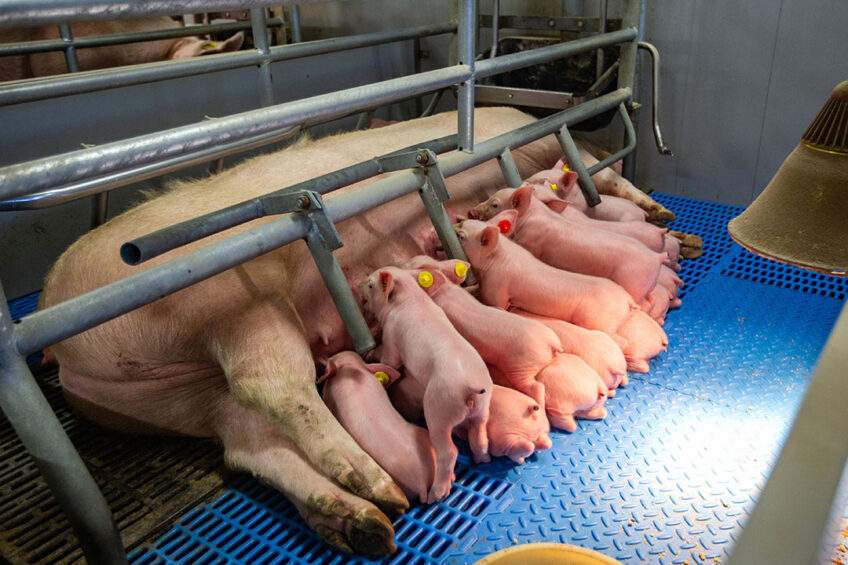
With the increased use of hyperprolific sows, the risk is increasing of piglets being born that weigh less than 1 kg. They do not have the best chance of survival. What can be done to help them overcome their first weeks and become strong finisher pigs?
The management of light born piglets requires many skills in modern-day swine operations. Considering their higher mortality and slow growth rate, proper management practices should be accompanied by an adequate nutritional strategy. As these piglets eat very low amounts of feed, every single gramme ingested should provide the optimal nutrient profile and density. Among these nutrients, trace elements are key for tissue and organ development as well as for immune function, intestinal integrity and inflammation mitigation.
Hyperprolific sows and their consequences
Intensive pressure for a genetic selection of hyperprolificacy, based on sow reproductive performance, has led to a steady increase in litter size over the last 3 decades. The pig industry has now reached a new step with the rise of the last generation of hyperprolific sows in the market coming from northern Europe, such as Topigs Norsvin 70 or DanBred breeds. Nowadays, it is possible to see litters of up to 20 piglets per sow on commercial pig farms around the world.
The first drawback of selecting for large litter size is the reduction in average piglet birth weight as well as an increase in the variability of birth weights within the litter. Thus, the proportion of small piglets in large litters as well as the frequency of intrauterine growth retarded (IUGR) piglets have notably increased. Additionally, most of these IUGR and low birth weight (LBW) piglets may also show long-term negative effects on their organ structure, postnatal growth and feed efficiency.
These delays can involve management difficulties as well as increased labour and equipment costs during the post-weaning phases. Unfortunately, the negative consequences can also be also long-lasting, leading to financial penalties at slaughter if pigs present with poor grading specifications.
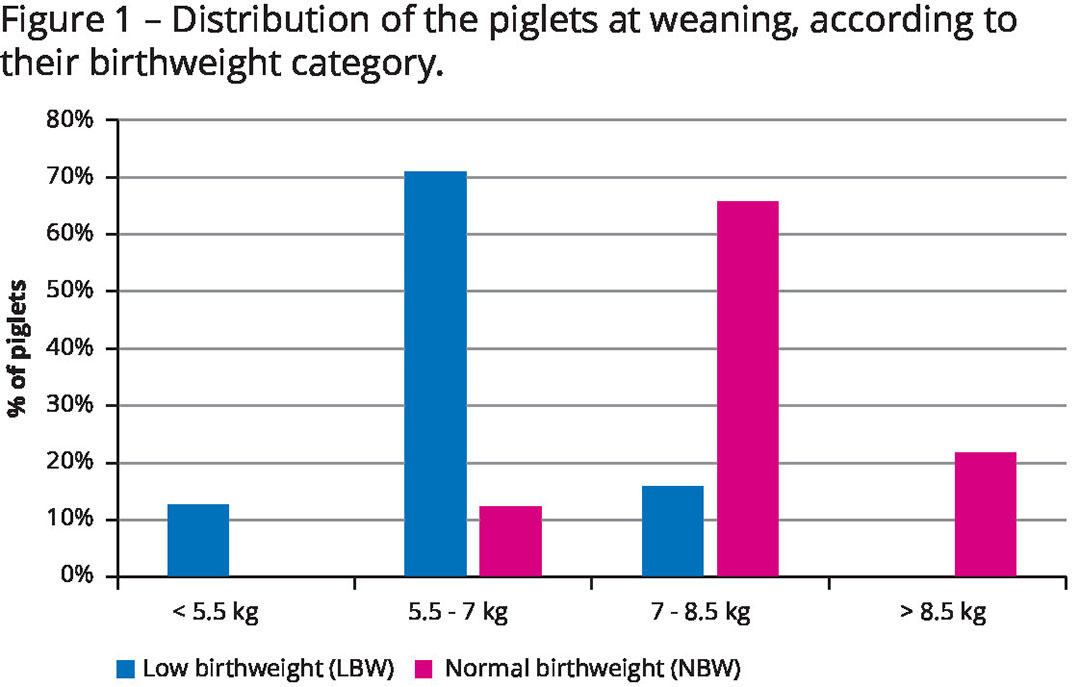
Is profitability a challenge?
Some recent studies recorded a higher mortality rate in LBW piglets. In 2 studies involving 4,000 piglets in European farms with an average birth weight of 1.5 kg, 15% of the piglets had a birth weight below 1.1 kg and 34% of these piglets died before weaning. In comparison, the mortality rate of the heavier piglets was around 8%.
Similarly, Schothorst Feed Research in the Netherlands conducted an analysis on 34,500 piglets between 2016 and 2021: 13% of the piglets had a birth weight below 1 kg and 40% of these piglets died during the pre-weaning period.
Globally, 40–50% of the total pre-weaning mortality can be associated with LBW piglets, although they represent only 15% of the piglets at birth. During the post-weaning phase, the mortality in the LBW group also tends to be higher than the mortality in the normal birth weight (NBW) group.
In addition, the growth performance of the LBW piglets is generally poor. In a study performed at the University of Bologna, 84% of the LBW piglets (1 kg at birth).
The retardation of growth was not fully resolved during the post-weaning phase. This result was confirmed in the literature: in the studies conducted until slaughter, the average daily gain is significantly lower in LBW groups compared to NBW groups.
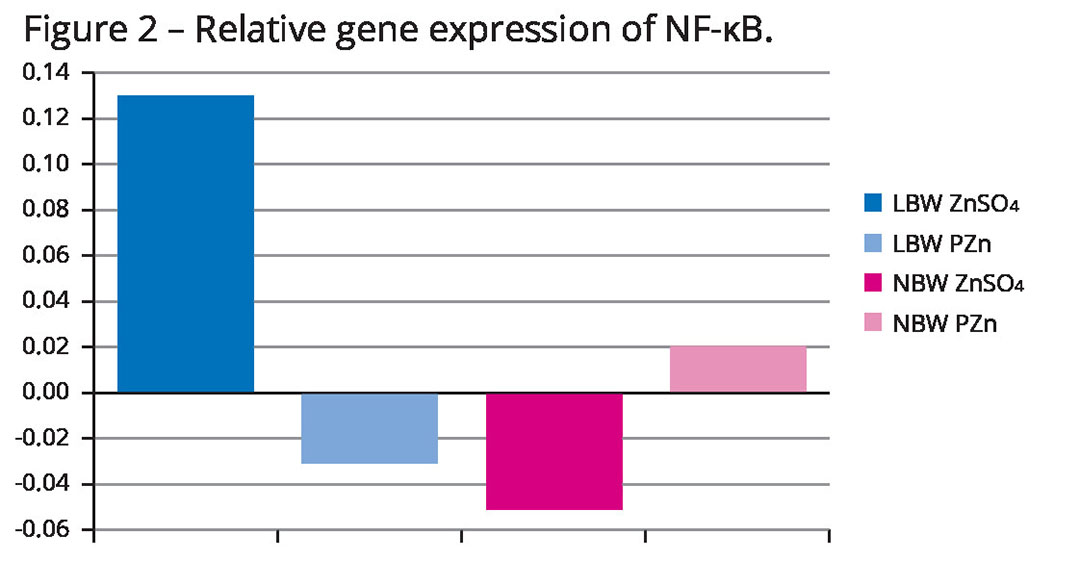
Inflammatory damages
The higher mortality rate and reduced weight gain can be partially explained by inflammatory damage caused to intestinal mucosa. The weaning process is also commonly associated with increased inflammation status, with a higher production of pro-inflammatory cytokines (such as TNF-α, IFN-γ and IL-6), related to the induction of NF-κB signalling genes. These cytokines can induce disruption in tight junctions and decrease intestinal epithelial integrity. Some trials showed that the gene expression of pro-inflammatory cytokines is higher in LBW piglets compared to NBW piglets during the suckling phase and after weaning.
Despite technological advances in intensive pig production, LBW and high within-litter variation are two of the most important factors impairing profitability in the swine production chain. This is the reason modern commercial farms need to cull IUGR piglets: there is no effective nutritional or management support for their growth or survival during the suckling and post-weaning periods. Specific nutritional management should be considered, and special focus must be paid to nutritional feeding of the neonates around weaning.
Potentiated zinc for light neonate
For decades it has been commonly observed that zinc fed at high level is an efficient growth promoter for weaning piglets. It reduces inflammation of intestinal mucosa by regulating gut microbiota and decreasing gene expression of pro-inflammatory cytokines. Some zinc sources have also showed positive results at nutritional level.
To evaluate a potentiated zinc source (HiZox), in 2022 a trial was conducted at the University of Bologna, Italy, with 64 weaned piglets divided in 2 groups:
LBW piglets (< 1 kg at birth); and
NBW piglets (> 1 kg at birth).
The potentiated zinc source and the standard zinc source (ZnSO4) were compared at the same dose, at the maximum dose authorised in the European Union (120 ppm of supplemented zinc) during the post-weaning phase.
The body weight of the NBW piglets was significantly higher until the end of the experiment. The potentiated zinc tended to increase weight gain 2 weeks after weaning, in the LBW group by 8% and in the NBW group by 6%. It significantly decreased the gene expression of NF-κB, showing a positive effect on the inflammatory status of the piglets, especially for LBW piglets.
Conclusion
Management of lightweight piglets at birth is becoming common practice all over the world. Nowadays, we estimate that at birth 15% of piglets are below 1 kg. Their survival rate and weight gain are a real challenge. Nevertheless, modern nutritional companies are studying new strategies to support the management of these piglets. The supplementation of a high bioavailable source of zinc can decrease inflammation of the gut and increase growth performance of LBW piglets after weaning.
Join 18,000+ subscribers
Subscribe to our newsletter to stay updated about all the need-to-know content in the pigsector, three times a week. Beheer
Beheer
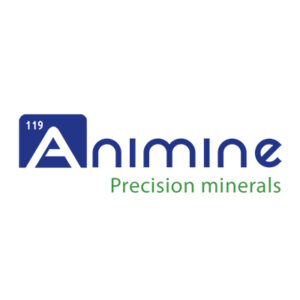
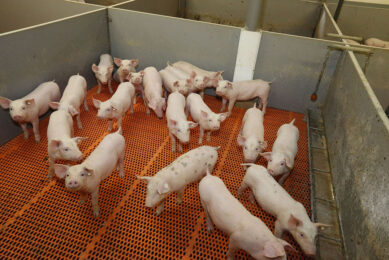
 WP Admin
WP Admin  Bewerk bericht
Bewerk bericht